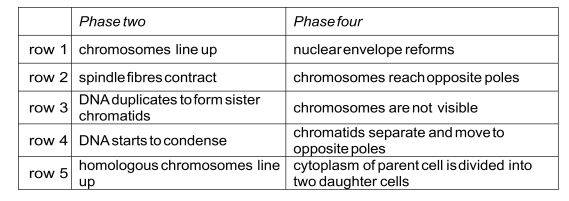The correct answer is B.
What is mitosis ?
It is a type of cell division that begins with the duplication of the DNA.
Furthermore, the daughter cells are genetically similar to the mother cell : a gene A with the allele y is transmitted to the daughter cells.
Its purpose is to ensure cell multiplication for tissue repair or growth.
In other words, from a single diploid mother cell (2n), 2 diploid daughter cells (2n) are obtained.
A diploid cell has 2 complete sets of chromosomes, usually written as being a 2n cell, as opposed to a haploid cell, that only has 1 set of each chromosome, and written as a n cell.
What are the different phases of mitosis ?
Phase 0 : replication
Prior to entering mitosis, the cell duplicates its DNA : that is called replication.
Phase 1 : prophase
Prophase is the first phase of mitosis. It is the phase during which the the nuclear membrane begins to disintegrate.
It is also when the centrioles organize themselves to ensure proper chromosome separation :
-
Centrioles are made of microtubules (a polymer of tubulin) and form the aster and spindle : they are fibers of microtubules that will split centromeres.
-
The centromere is the area where the 2 sister chromatids of a chromosome are in contact.
Phase 2 : metaphase
During metaphase, the nuclear membrane is completely disintegrated and the are attached to the centromeres.
The chromosomes align in the middle of the cell, to prepare for chromatid separation.
Phase 3 : anaphase
Anaphase is the phase where the centromeres are split. Each half moves to opposite poles.
The cell membrane also begins to form itself in the center, and will later pinch the cell into 2 distinct ones.
Phase 4 : telophase
Telophase is the phase where the nuclear envelope reforms around the separated chromosomes.
Mitosis ends with 2 daughter cells that are genetically identical to the mother cell.
Based on this information, the only row that matches is number 1.
